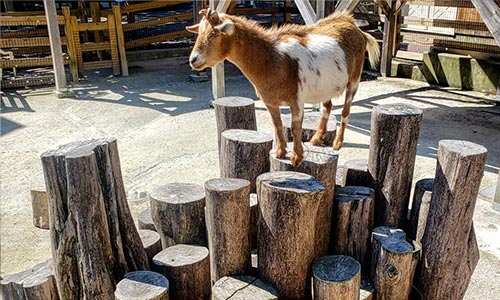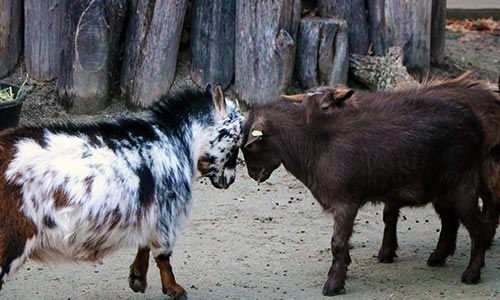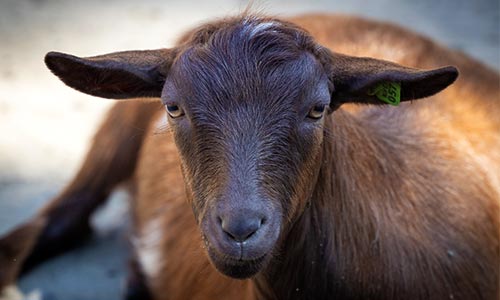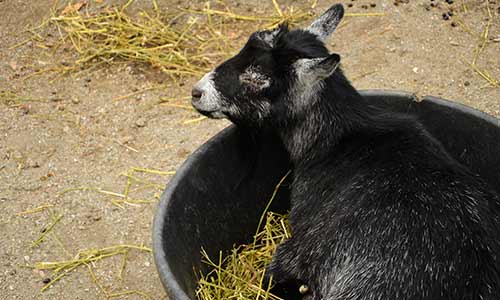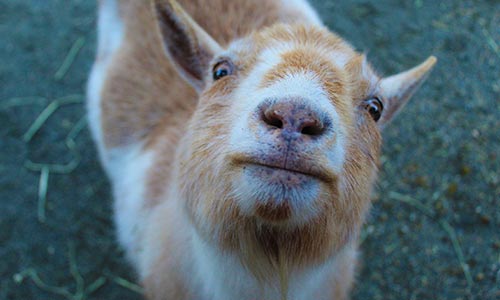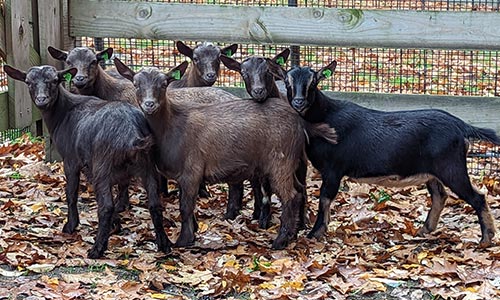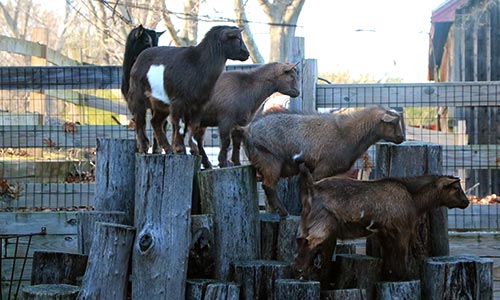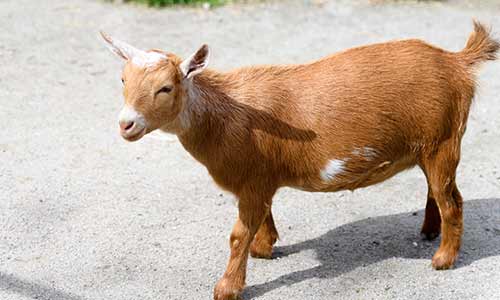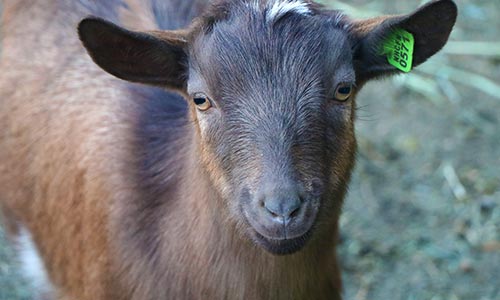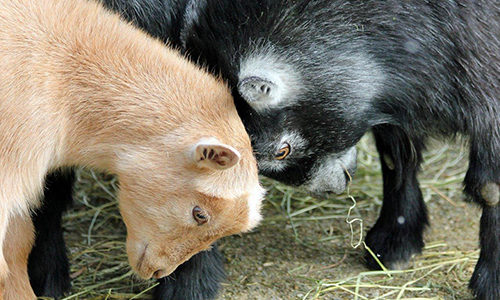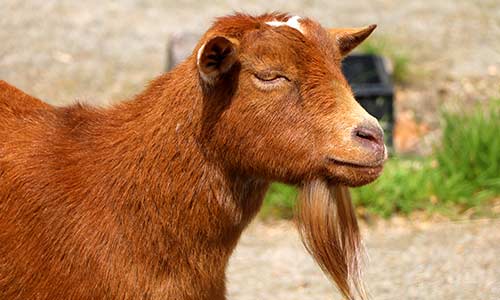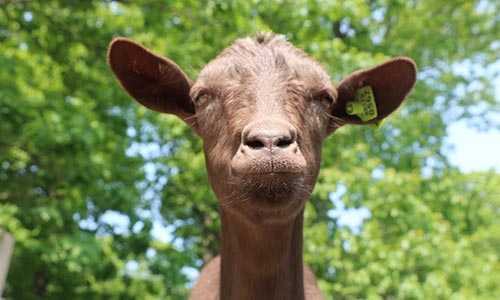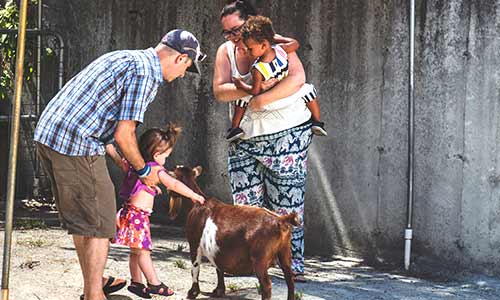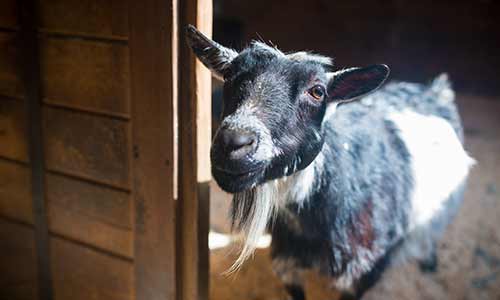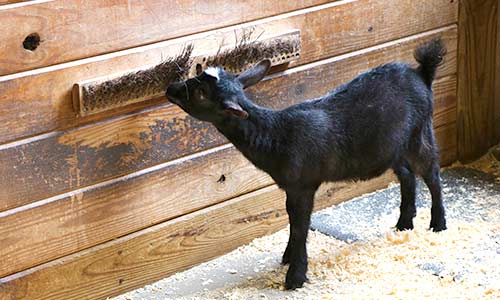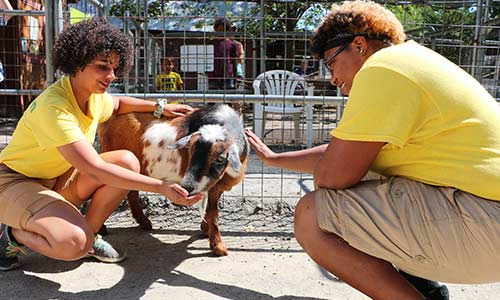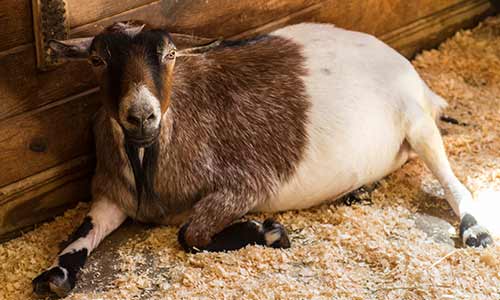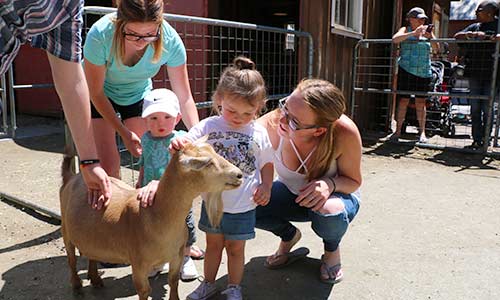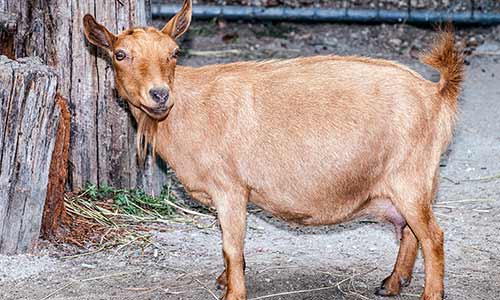Nigerian Dwarf Goat
Capra aegagrus hircus
About the Nigerian Dwarf Goat

Class: Mammalia
Order: Artiodactyla
Family: Bovidae
Genus: Capra
Species: aegagrus hirus
Nigerian dwarf goats are noted for their wide range of color patterns, which include combinations of black, brown or gold mixed with white, as well as for their easy-going temperaments. These herbivorous miniature goats are of West African descent. They have been domesticated as dairy goats and can be found all over the world. Highly adaptable, Nigerian dwarf goats can live in climates ranging from cold to hot and dry.
Nigerian Dwarf Goat Facts
Appearance:
Nigerian dwarf goats are miniature goats that are found in a large variety of colors, with any combination of black, white, brown and silver. Coloration of offspring may vary from its parents. They have short tails, upward facing ears, and short to medium length hair.
Size:
Males and females are similar in size. Reaching an average of 20 inches, and weighing 75 pounds.
Diet:
Goats mostly eat grasses, plants and parts of small shrubs or trees. These browsers can even eat poison ivy or poison oak. Goat owners take advantage of this, letting goats clear plants that other animals won’t eat. They can improve pastures by removing weedy undergrowth and invasive plant species.
Reproduction:
Nigerian dwarf goats don’t have a specific breeding season; they mate at various times throughout the year. Males reach sexual maturity before females, maturing as soon as three months after birth. Females can start breeding at seven to eight months after birth.
Gestation:
145-153 days
Number of offspring: One to four kids, weighing roughly two pounds each at birth.
Behavior:
Nigerian dwarf goats are raised for milk production but also kept as pets. They are sociable, friendly, and can thrive in almost any place. These goats are herd animals and can readily share space with other farm animals. Because of this, they tend to be friendly towards humans.
Role in their habitat:
In captivity they are often used for milk production.
Habitat/range:
Nigerian dwarf goats are originally from western Africa, but the breed has largely been developed in the United States. Today they can be found in wooded pastures and domestic farmland worldwide.
Median Life Expectancy:
15 years
Fun Facts:
- Nigerian dwarf goats are raised for milk production but also as pets. If properly cared for, they are sociable and can thrive in most places.
- They produce up to two quarts of milk per day. Nigerian dwarf goat milk is popular due to its high butterfat content.
- Poison ivy and poison oak do not affect them and they will readily eat it, along with many invasive plant species.
You Can Find This Animal in the Franklin Farm
No Poison Here!
These goats are immune to the itchy effects of poison ivy. Farmers are now "goatscaping" their land to rid their area of overgrown ivy.
Zoodopt a Goat!
Zoodopts support the care and feeding of our animals, and with each purchase, we'll bring a little of the Zoo to you! Zoodopt today!
Franklin Farm Chat
Join us daily at 10:00 a.m. for a Franklin Farm Chat!
You might also like
At Franklin Park Zoo:
At Stone Zoo:

